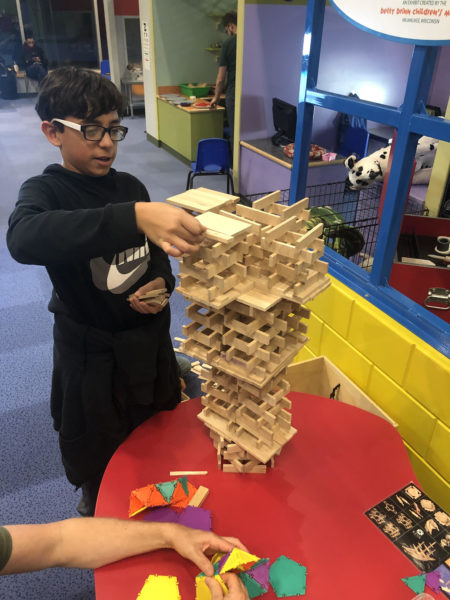Materials Needed:
- 10 - 20 Plastic Cups (multiple sizes if possible)
- Tape measure
Directions:
- Build the tallest tower possible using only the plastic cups. Make sure it stands for at least 15 seconds!
- Measure the height and record the number.
- Start over and build another tower in a different way, trying to make the tower taller.
How to expand it:
- Add different materials to the challenge. For example, clothes pins, popsicle sticks, silverware, toys, etc. Can you balance a spoon op top of your tower? Can you drape a blanket over it?
- Try to build your towers on a different floor, move from carpet to hardwood, to tile. Observe the differences!
- Knock it down! Build a tower as tall as you can, then make a game out of knocking it over.

What do kids learn?
- Hand eye coordination and fine motor skills, both useful developmental skills for learning, writing, and creating!
- Basic engineering skills. Engineers solve problems with constraints, in this case, the limited number of cups. The learn to solve problems by using the engineering design process: asking questions, coming up with solutions, building, testing and improving.
- Math skills. Small children learn about geometric shapes, volume, and mass by feeling three dimensional shapes in their hands and seeing how the shapes interact together. Building a tower and talking about it is a great way to build a foundation for math.
- Patience and self control. Making the tower taller instead of knocking it over is hard for small children. This is a great test of patience, but knocking it over helps them learn, too!
- Science vocabulary:
- Foundation: the bottom, the support on which a structure rests.
- Center of Mass: the place where most of the weight of an object is concentrated. In a tower, that's the base. Even little kids know the best way to knock over a tower is to go for the bottom! That's using center of mass to solve a problem.
- Constraints: a limitation or restriction. Real engineers have to work around constraints all the time!

